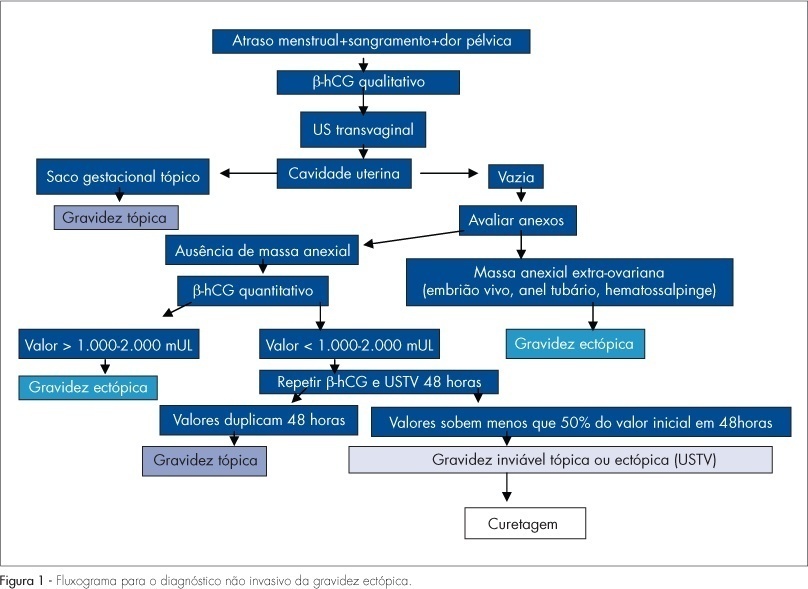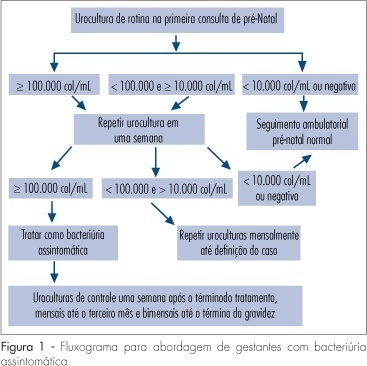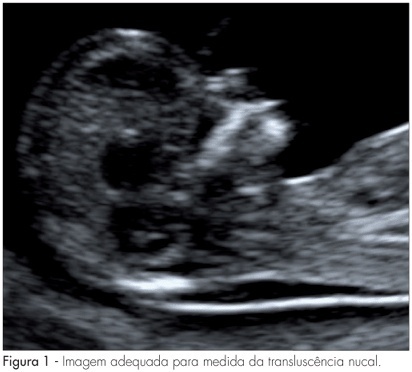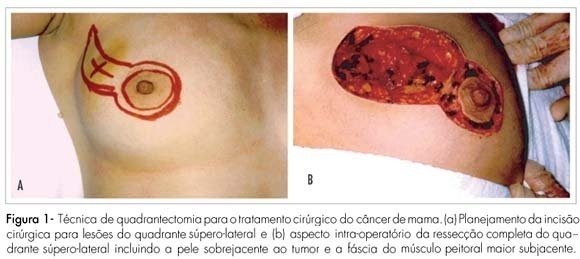Summary
Revista Brasileira de Ginecologia e Obstetrícia. 2008;30(3):149-159
DOI 10.1590/S0100-72032008000300008
It is advisable to do the non-invasive diagnosis of ectopic pregnancy precociously, before there is the tube rupture, combining for that the transvaginal ultrasonography with the dosage of the b-fraction of the chorionic gonadotrophin. A range of treatment options may be used. Either a surgical intervention or a clinical treatment may be taken into consideration. Laparotomy is indicated in cases of hemodynamic instability. Laparoscopy is the preferential route for the treatment of tube pregnancy. Salpingectomy should be performed in patients having the desired number of children, while salpingostomy should be indicated in patients willing to have more children, when the b-hCG titers are under 5,000 mUI/mL and the surgical conditions are favorable. The use of methotrexate (MTX) is a consecrated clinical procedure and should be indicated as the first option of treatment. The main criteria for MTX indication are hemodynamic stability, b-hCG <5,000 mUI/mL, anexial mass <3,5 cm, and no alive embryo. It is preferable a single intramuscular dose of 50 mg/m², because it is easier, more practical and with less side effects. Protocol with multiple doses should be restricted for the cases with atypical localization (interstitial, cervical, caesarean section scar and ovarian) with values of b-hCG >5,000 mUI/mL and no alive embryo. Indication for local treatment with an injection of MTX (1 mg/kg) guided by transvaginal ultrasonography should occur in cases of alive embryos, but with an atypical localization. An expectant conduct should be indicated in cases of decrease in the b-hCG titers within 48 hous before the treatment, and when the initial titers are under 1,500 mUI/mL. There are controversies between salpingectomy and salpingostomy, concerning the reproductive future. Till we reach an agreement in the literature, the advice to patients who are looking forward to a future gestation, is to choose either surgical or clinical conservative conducts.

Summary
Revista Brasileira de Ginecologia e Obstetrícia. 2008;30(2):93-100
DOI 10.1590/S0100-72032008000200008
Several factors cause urinary tract infection (UTI) to be a relevant complication of the gestational period, aggravating both the maternal and perinatal prognosis. For many years, pregnancy has been considered to be a factor predisposing to all forms of UTI. Today, it is known that pregnancy, as an isolated event, is not responsible for a higher incidence of UTI, but that the anatomical and physiological changes imposed on the urinary tract by pregnancy predispose women with asymptomatic bacteriuria (AB) to become pregnant women with symptomatic UTI. AB affects 2 to 10% of all pregnant women and approximately 30% of these will develop pyelonephritis if not properly treated. However, a difficult to understand resistance against the identification of AB during this period is observed among prenatalists. The diagnosis of UTI is microbiological and it is based on two urine cultures presenting more than 10(5) colonies/mL urine of the same germ. Treatment is facilitated by the fact that it is based on an antibiogram, with no scientific foundation for the notion that a pre-established therapeutic scheme is an adequate measure. For the treatment of pyelonephritis, it is not possible to wait for the result of culture and previous knowledge of the resistance profile of the antibacterial agents available for the treatment of pregnant women would be the best measure. Another important variable is the use of an intravenous bactericidal antibiotic during the acute phase, with the possibility of oral administration at home after clinical improvement of the patient. At our hospital, the drug that best satisfies all of these requirements is cefuroxime, administered for 10-14 days. Third-generation cephalosporins do not exist in the oral form, all of them involving the inconvenience of parenteral administration. In view of their side effects, aminoglycosides are considered to be inadequate for administration to pregnant women. The inconsistent insinuation of contraindication of monofluorinated quinolones, if there is an indication, norfloxacin is believed to be a good alternative to cefuroxime. In cases in which UTI prophylaxis is indicated, chemotherapeutic agents are preferred, among them nitrofurantoin, with care taken to avoid its use at the end of pregnancy due to the risk of kernicterus for the neonate.

Summary
Revista Brasileira de Ginecologia e Obstetrícia. 2008;30(1):42-47
DOI 10.1590/S0100-72032008000100008
Breast cancer is the principal cause of death from cancer in women. Molecular studies of breast cancer, based in the identification of the molecular profiling techniques through cDNA microarray, had allowed defining at least five distinct sub-group: luminal A, luminal B, HER-2-overexpression, basal and " normal" type breast-like. The technique of tissue microarrays (TMA), described for the first time in 1998, allows to study, in some samples of breast cancer, distinguished by differences in their gene expression patterns, which provide a distinctive molecular portrait for each tumor and the basis for and improved breast cancer molecular taxonomy. Another important implication is that genetic profiling may lead to the identification of new target for therapy and better predictive markers are needed to guide difficult treatment decisions. Additionally, the current pathology classification system is suboptimal, since patients with identical tumor types and stage of disease present different responses to therapy and different overall outcomes. Basal breast tumor represents one of the most intriguing subtypes and is frequently associated with poor prognosis and absence of putative therapeutic targets. Then, the purpose of this review was to resume the most recent knowledge about the breast carcinoma classification and characterization.
Summary
Revista Brasileira de Ginecologia e Obstetrícia. 2007;29(12):647-653
DOI 10.1590/S0100-72032007001200008
Screening for major chromosomal abnormalities can be provided in the first trimester of pregnancy. Screening by a combination of fetal nuchal translucency and maternal serum free human chorionic gonadotropin and pregnancy-associated plasma protein-A can identify 90% of fetuses with trisomy 21 and other major chromosomal abnormalities for a false-positive rate of 5%. This is superior to the 30% detection rate achieved by maternal age and 65% by second-trimester maternal serum biochemistry. A further improvement in the effectiveness of first-trimester screening is likely to be achieved by a risk-orientated two-stage approach. In this approach, the patients are subdivided into a high-risk group, requiring invasive testing; a low-risk group, which can be reassured that an abnormality is unlikely, and an intermediate-risk group (risk of 1 in 101 to 1 in 1000), in which further assessment is performed by first-trimester ultrasound examination (for presence/absence of the nasal bone or presence/absence of tricuspid regurgitation or normal/abnormal Doppler velocity waveform in the ductus venosus), and chorionic villus sampling is performed if their adjusted risk becomes 1 in 100 or more. Those performing first-trimester scans should be appropriately trained and their results subjected to external quality assurance. This process was well established by the Fetal Medical Foundation several years ago and is widely accepted internationally.

Summary
Revista Brasileira de Ginecologia e Obstetrícia. 2007;29(11):593-601
DOI 10.1590/S0100-72032007001100008
There is evidence that estrogen, progesterone and testosterone have modulatory effects over both cellular and humoral immune responses. These effects occur via immune-neuroendocrine interactions, involving the pituitary, gonadal steroids, thymic hormones, and the presence of specific receptors and messengers. These immune responses may be altered during pregnancy, gonadectomy, menopause and hormone therapy. Estrogen depresses the cellular immunity, suppresses the natural killer cell activity and increases the production of antibodies. Progesterone/progestogen suppresses the cellular immune system. Androgens, after metabolization in estrogens, might stimulate the humoral immune response. Hormone therapy is still broadly used in post-menopause women with the purpose of decreasing climacteric symptoms, as well as preventing genital atrophy and bone loss. Its use to attenuate the risk of cardiovascular and neurodegenerative diseases remains in debate. A few studies have been carried out to examine the effect of post-menopause hormone therapy on the immune system. There is evidence that the hypoestrogenic state, following menopause, could result in less resistance to infections. The present review examines the interaction between sexual steroids and the immune system and, based on epidemiological and clinical studies, evaluates the effects of hormone therapy on the immune responses. It was concluded that the hormone therapy normalizes the cellular immune response in post-menopausal women.
Summary
Revista Brasileira de Ginecologia e Obstetrícia. 2007;29(9):484-489
DOI 10.1590/S0100-72032007000900008
In Brazil, where 90% of the childbirths occur in hospitals, 67.1% of the cases of maternal death are due to direct obstetric causes, mainly hypertensive disorders, but a quarter of the deaths are due to indirect obstetric causes. As maternal death is a rare event, estimated in 76/100,000, the study of severe maternal morbidity, following international literature, can contribute to qualify obstetrical care. Maternal morbidity is a continuum that ends with death, but there is a separate group, with extreme severity, known as near miss. From the literature review, there are the difficulties to obtain an operational definition of the cases of extremely severe morbidity or near miss. The prevalence ranged from 0.80-8.23%, according to the defining criteria and health care provided at the region. The characterization of severe maternal morbidity and near miss allows for monitoring the process of obstetrical care and could help to qualify treatment of maternal urgencies and emergencies, interrupting the process that can lead to death.
Summary
Revista Brasileira de Ginecologia e Obstetrícia. 2007;29(8):428-434
DOI 10.1590/S0100-72032007000800008
The surgical strategy for breast cancer treatment has changed considerably over the last decade. The breast conserving surgery (BCS) is the standard treatment for early stage breast cancer nowadays. With the current population breast cancer screening programs and the emerging use of systemic neoadjuvant therapy, an increasing number of patients have been eligible to BCS. However, several specific factors must be considered for the therapeutic planning for these patients. This review provides a surgical methodology overview for the BCS in breast carcinoma.

Summary
Revista Brasileira de Ginecologia e Obstetrícia. 2007;29(7):370-375
DOI 10.1590/S0100-72032007000700008
Studies have shown possible risk relations among oral illnesses, mainly periodontal disease and adverse pregnancy outcomes, such as prematurity, low birth weight and preeclampsia. The explanation for this hypothesis is based on the fact that periodontal disease is an infectious state, which may increase maternal serum cytokines through the release of such agents directly from the periodontal pocket or by through the dissemination of pathogenic bacteria, inducing systemic production. This assumption is based on the knowledge that the physiopathology of the pregnancy complications cited above is associated with the presence of some cytokines in the maternal serum. The present study work has the objective to review literature in search of evidence to these alleged associations. Although a number of clinical studies have been found in this review, we noticed a lack of methodological standards, what limits the conclusions about this topic. On the other side, the fact that periodontal disease is not yet a confirmed risk factor for adverse pregnancy outcomes does not reduce the importance of oral health maintenance during pregnancy, since it is important to allow adequate feeding without pain and bleeding in order to maintain an adequate nutritional supply.